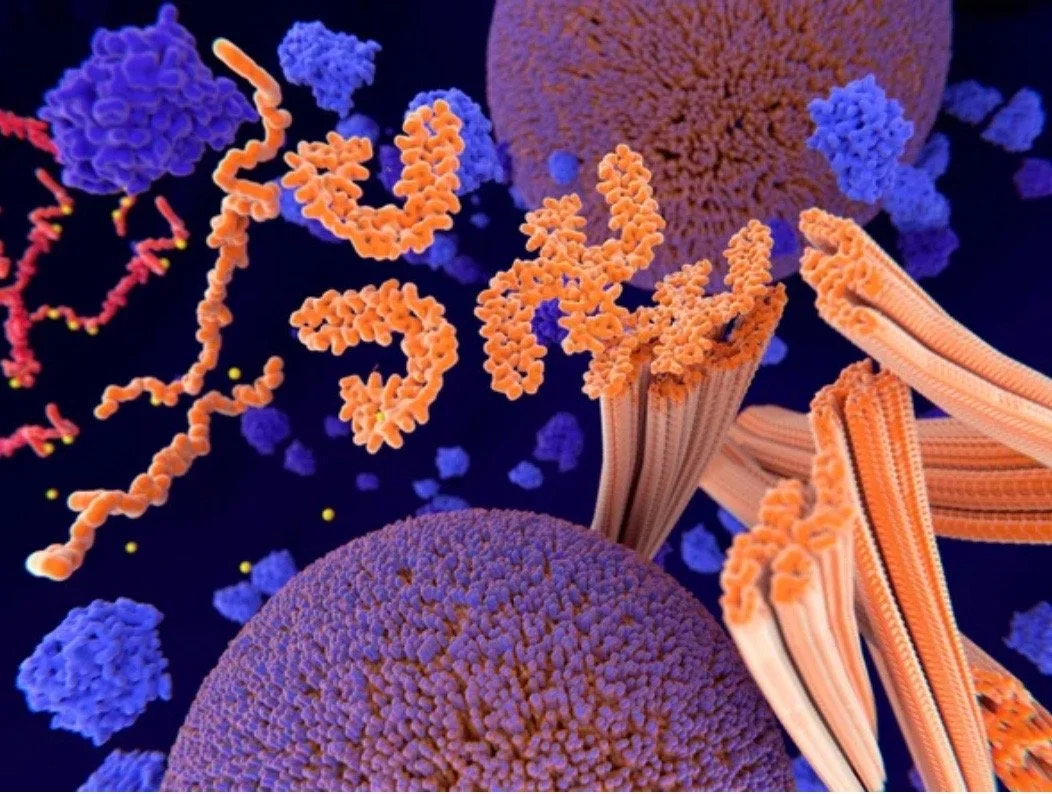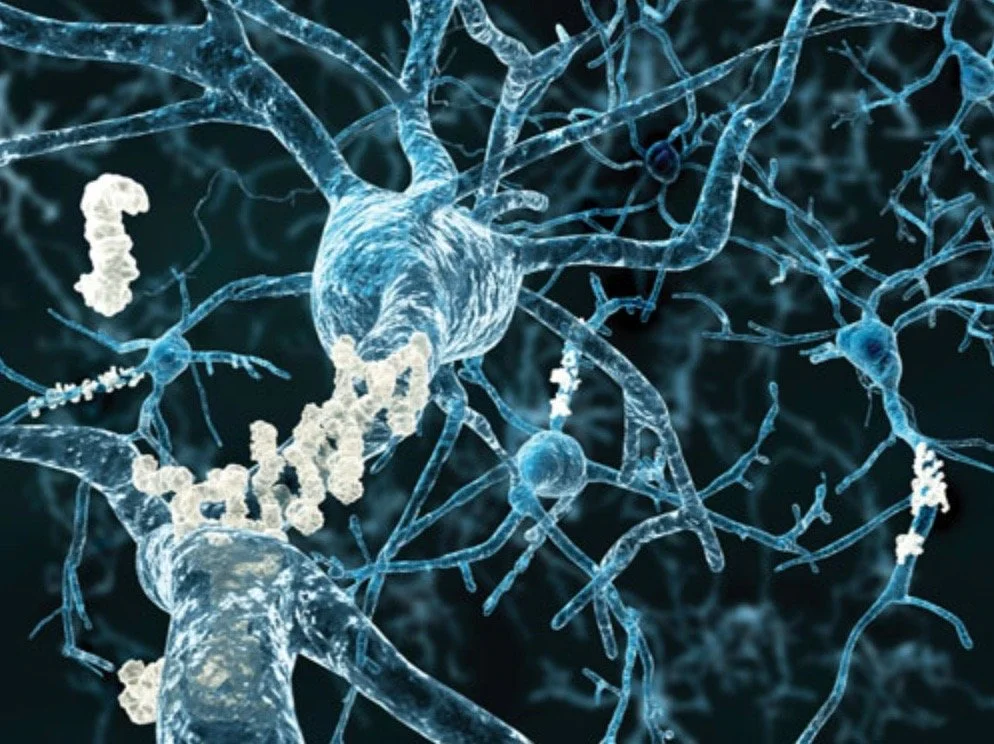Tau Proteins: Unraveling the Dance of Proteins in Your Brain.
Written By: Andrea Cedeno
Imagine a lively dance floor, where these proteins whirl, tango, and waltz to the rhythm of your thoughts and memories. In this article, we will dive into the fascinating roles of Tau proteins, their occasional missteps, and their implications when talking about neurodegenerative diseases.
Meet the Stars - Tau Proteins Unveiled
Picture Tau proteins as the graceful ballerinas of your brain. They possess unique and captivating structures. Tau proteins are commonly disorganized, they lack fixed, rigid shapes, which allows them to interact properly with other cellular components. Their adaptability enables them to perform multiple functions in the brain. These proteins have the primary function of stabilizing these tiny structures that resemble the scaffolding of a cellular ballet, they are called microtubules. Microtubules act as a highway for the transportation of vital substances within neurons, exactly like ballet stages where dancers move seamlessly.
Tau proteins play a crucial role in the brain by attaching to microtubules, where they help in keeping these structures stable. This stability is essential for efficient communication and transportation between brain cells. Research has discovered that Tau proteins can undergo changes after they are made which impacts how they interact with microtubules.
The Dance Begins - Tau Proteins in Action
Imagine entering the world of your brain, where neurons communicate through a complex dance. Tau proteins, like skilled choreographers, play an essential role in ensuring this dance's smooth performance. By binding to microtubules, they maintain the structure and stability of these cellular highways, facilitating the transport of vital molecules and organelles within neurons. The delicate balance of Tau's actions is crucial. Too much binding can lead to microtubule stabilization to the point of rigidity, while too little can cause destabilization, hindering cellular transport. This balance is crucial to the precise coordination required in a dance ensemble. Tau proteins also exhibit unique traits, with different forms performing distinct functions in various parts of the brain. This specialization ensures that the dance of the brain's communication network is finely tuned to meet specific needs.
The Ripple Effect - Tau Proteins & Neurodegenerative Diseases
Tau proteins, which are typically essential for maintaining the structural integrity of neurons, become a focal point of concern when their behavior goes wrong, leading to their involvement in various neurodegenerative diseases. While they usually support the brain's elaborate dance of communication, tau proteins can take a tragic turn, contributing to the development and progression of disorders like Alzheimer's disease, frontotemporal dementia, and others.
In Alzheimer's disease, Tau proteins play a central role in the formation of neurofibrillary tangles, one of the main pathological features of the disease. These tangles are composed of added and misfolded Tau proteins. As Tau proteins lose their normal structure and begin to accumulate, they can disrupt the microtubules. This disruption leads to impaired cellular function and ultimately contributes to the death of nerve cells.
Tau pathology correlates strongly with the progression of cognitive decline in Alzheimer's disease. The spread of Tau sums throughout the brain is thought to coincide with the worsening of symptoms, making them a key target for Alzheimer's research and potential therapeutic interventions.
Tau proteins continue to mesmerize and captivate several researchers, they are the future and are promising new chapters in the story of brain health. The continuous research and discoveries in this field offer glimmers of hope for a brighter future in medicine and finding cures for neurodegenerative diseases.
Works Cited:
Barbier, Pascale. “Role of Tau as a Microtubule-Associated Protein: Structural and Functional Aspects.” NCBI, 7 August 2019, https://www.ncbi.nlm.nih.gov/pmc/articles/PMC6692637/. Accessed 5 September 2023.
Gao, Yong-Lei. “Tau in neurodegenerative disease - Gao.” Annals of Translational Medicine, 26 May 2018, https://atm.amegroups.org/article/view/19456/19578. Accessed 5 September 2023.
Higgins, Nick, and Karen Weintraub. “Tau Shows Promise as Achilles' Heel for Alzheimer's and Similar Diseases.” Scientific American, 2 March 2020, https://www.scientificamerican.com/article/tau-shows-promise-as-achilles-heel-for-alzheimers-and-similar-diseases/. Accessed 5 September 2023.
Iqbal, Khalid. “Tau and neurodegenerative disease: the story so far.” PubMed, https://pubmed.ncbi.nlm.nih.gov/26635213/. Accessed 5 September 2023.
Popa, Laurentiu S., and Timothy J. Ebner. “Role of Tau as a Microtubule-Associated Protein: Structural and Functional Aspects.” Frontiers, 18 July 2019, https://www.frontiersin.org/articles/10.3389/fnagi.2019.00204/full. Accessed 5 September 2023.

